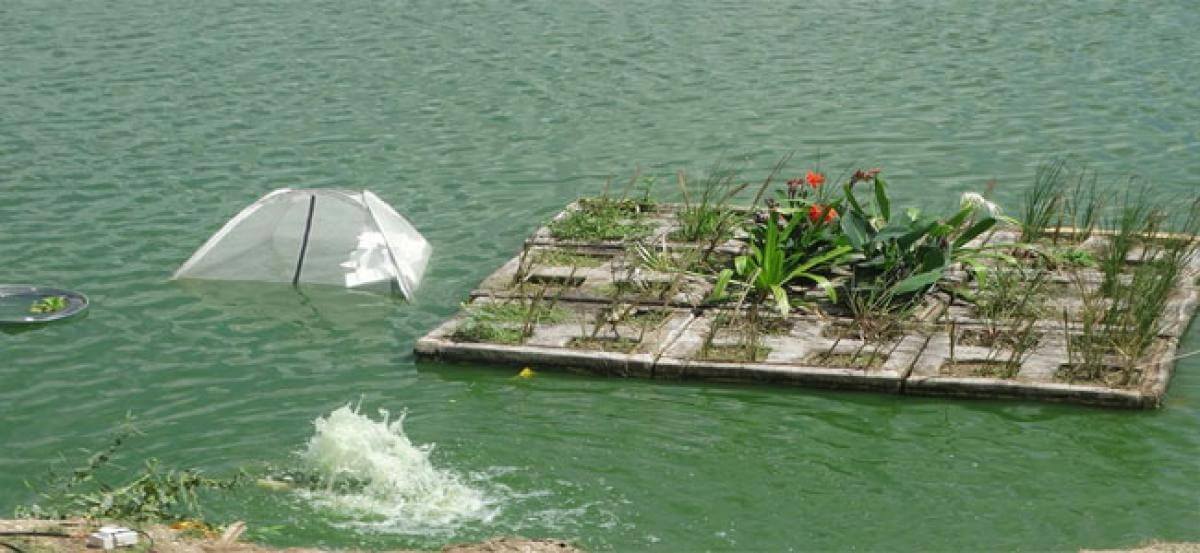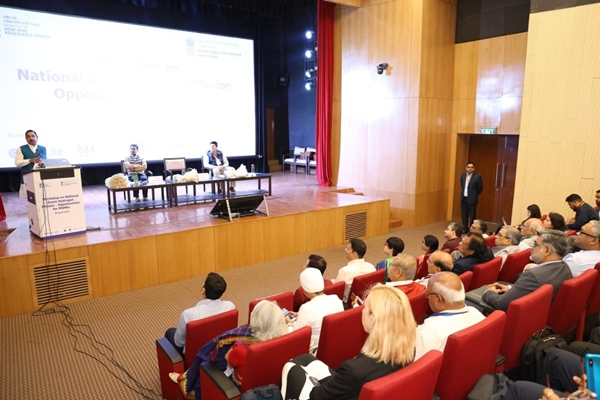Hussain Sagar lake grapples with pollution
Fri 23 Feb 2024, 00:37:07

Hussain Sagar lake in the city is now grappling with a concerning decline in water quality with recent measurements from Telangana State Pollution Control Board (TSPCB), indicating steady degradation of vital parameters that show the quality of water.
According to data released by the TSPCB, the water quality at Necklace Road, one of the prime locations around the lake, has witnessed a consistent degradation in crucial parameters throughout 2023. The levels of biological oxygen demand (BOD), chemical oxygen demand (COD), total suspended solids (TSS), and total coliform bacteria (TCB) have all exceeded permissible limits.
Despite the pH levels of the lake water remaining relatively stable, fluctuating within the range of 6.63 to 7.63, other indicators paint a grim picture. The electrical conductivity (EC) values have consistently shown high levels, suggesting an abundance of dissolved salts and minerals.
Dissolved oxygen (DO) levels, crucial for supporting aquatic life, have remained insufficient throughout the monitoring period, falling below recommended thresholds.
Of particular concern is the alarming rise in total coliform bacteria, including faecal coliform, surpassing safe limits, indicating potential faecal contamination and the presence of harmful pathogens.
In contrast, data from monitoring the lake at midstream, near the Buddha statue, presents a slightly better scenario in some parameters compared to Necklace Road. While pH levels fluctuated between 6.26 and 8.02, indicating some variability in water acidity or alkalinity, EC values suggested varying levels of dissolved
salts and minerals.
salts and minerals.
Though DO levels fluctuated, they generally remained within a range considered adequate for supporting aquatic life, ranging from 3.0 to 4.8 mg/L. However, BOD and COD levels fluctuated, indicating varying degrees of organic and inorganic pollution. Despite some improvements, total coliform and faecal coliform bacteria levels still exceeded safe limits at times.
Commenting on the situation, senior social scientist WG Prasanna Kumar of the Telangana State Pollution Control Board emphasised the impact of freshwater inflows, particularly from rainfall, on the lake’s water quality. He noted the influence of seasonal variations, such as reduced water levels and increased evaporation during summer months, leading to concentration spikes in pollutants.
Kumar highlighted the significant strides made in sewage treatment around Hussain Sagar over the years, with treatment plants playing a pivotal role in improving water quality.
However, he stressed the need to address issues like leakage from sources like Banjara nala to further enhance water quality and ensure sustained improvements in the future.
“The intensity of rains or fresh water significantly impacts the quality of water in Hussain Sagar Lake,” Kumar explained. “Presently, Hussain Sagar is more or less receiving only treated water. However, if leakage from Banjara nala could be stopped, the water in Hussain Sagar would be purely treated water.”
He also mentioned that water quality has improved over a decade, crediting the successive establishment of treatment plants for the improvement.
No Comments For This Post, Be first to write a Comment.
Most viewed from Hyderabad
Most viewed from World
AIMIM News
Latest Urdu News
Most Viewed
May 26, 2020
Which Cricket team will win the IPL 2025 trophy?
Latest Videos View All
Like Us
Home
About Us
Advertise With Us
All Polls
Epaper Archives
Privacy Policy
Contact Us
Download Etemaad App
© 2025 Etemaad Daily News, All Rights Reserved.

.jpg)
.jpg)
.jpg)
.jpg)
.jpg)
.jpg)
.jpg)
.jpg)




.jpg)
.jpg)
.jpg)
.jpg)
.jpg)
.jpg)
.jpg)
.jpg)





















